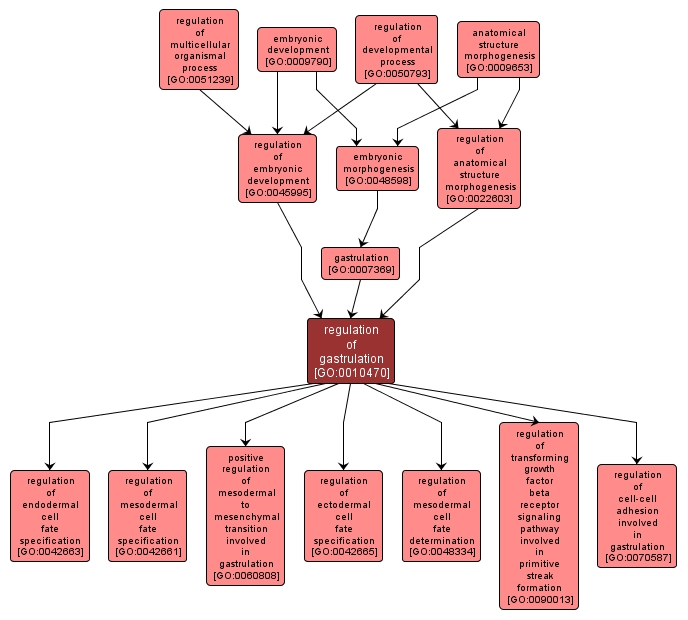GO TERM SUMMARY
|
| Name: |
regulation of gastrulation |
| Acc: |
GO:0010470 |
| Aspect: |
Biological Process |
| Desc: |
Any process that modulates the rate or extent of gastrulation. Gastrulation is the complex and coordinated series of cellular movements that occurs at the end of cleavage during embryonic development of most animals. |
|

|
INTERACTIVE GO GRAPH
|














